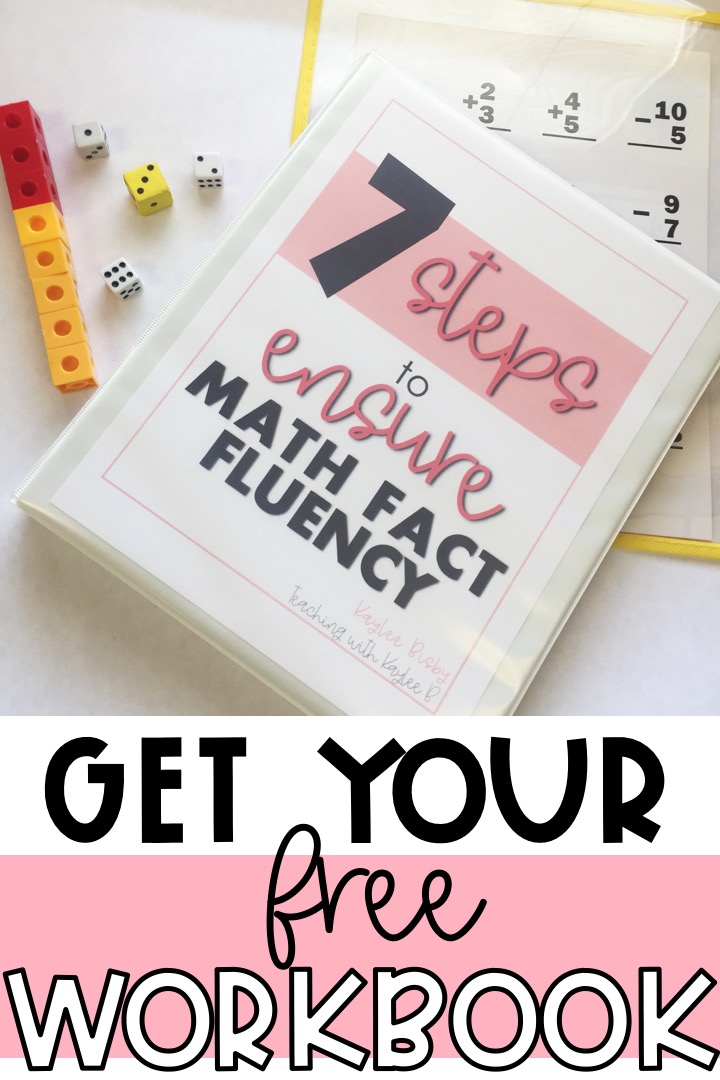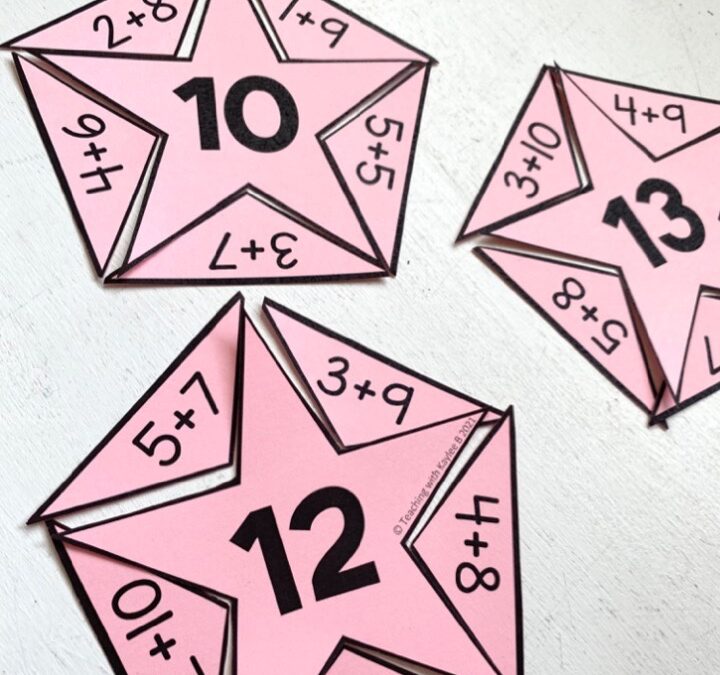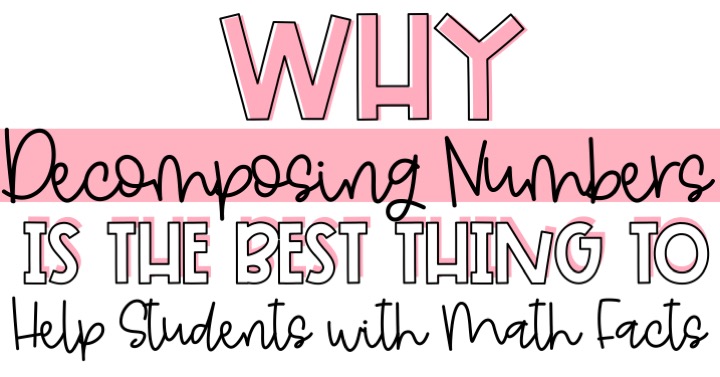
One of my favorite math fact activities is to put up a math fact equation and then ask students how they get to the answer. Oftentimes students are decomposing numbers to get to the answer.
Decomposing Numbers
If the equation is 6+8, students say 6 is 5 and 1, and 8 is 5 and 3, so 5+5=10 and 1+3=4, 10+4=14, so the answer is 14. These reasoning strategies show that students are well on their way to math facts mastery. That is why it is so important for students to practice decomposing numbers.
Decomposing and composing numbers is actually one of the first steps to getting students to math fact mastery. I share my 7 Steps to Ensure Math Fact Mastery in my free workbook for 1st and 2nd grade teachers here. Download it free here.
So we know why decomposing numbers to 10 is important, but how can we actually help students see how to do this and apply it?
How Do You Decompose Numbers
When I teach my students how to decompose numbers, I like to use counters. I place out a number of counters and then flip some over to yellow. Then we write the equation they make. We continue to flip over different numbers of yellow counters until we get all the ways to make that number.
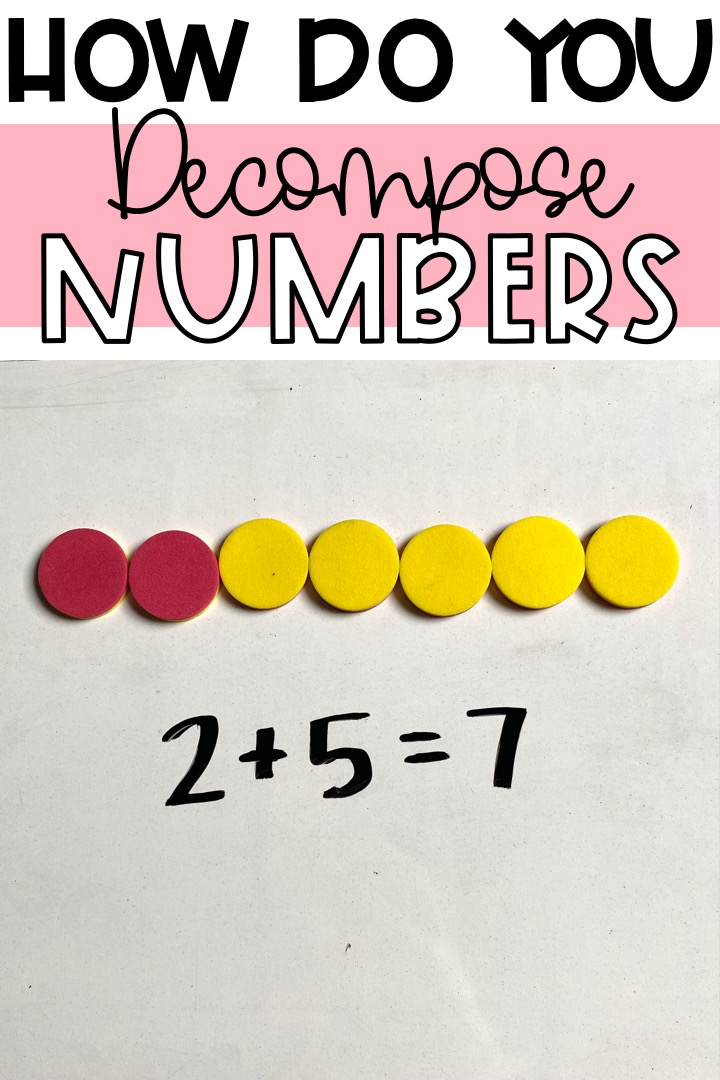
Then I give students a set number of counters and they have to write all the equations to make that number.
I also like to have my 2nd grade students practice decomposing numbers by solving math fact puzzles. Students have to find all the ways to make a number and put it around the star. This is a great center activity. I also set it out as a fast finisher activity. Find this puzzle to practice decomposing numbers here.
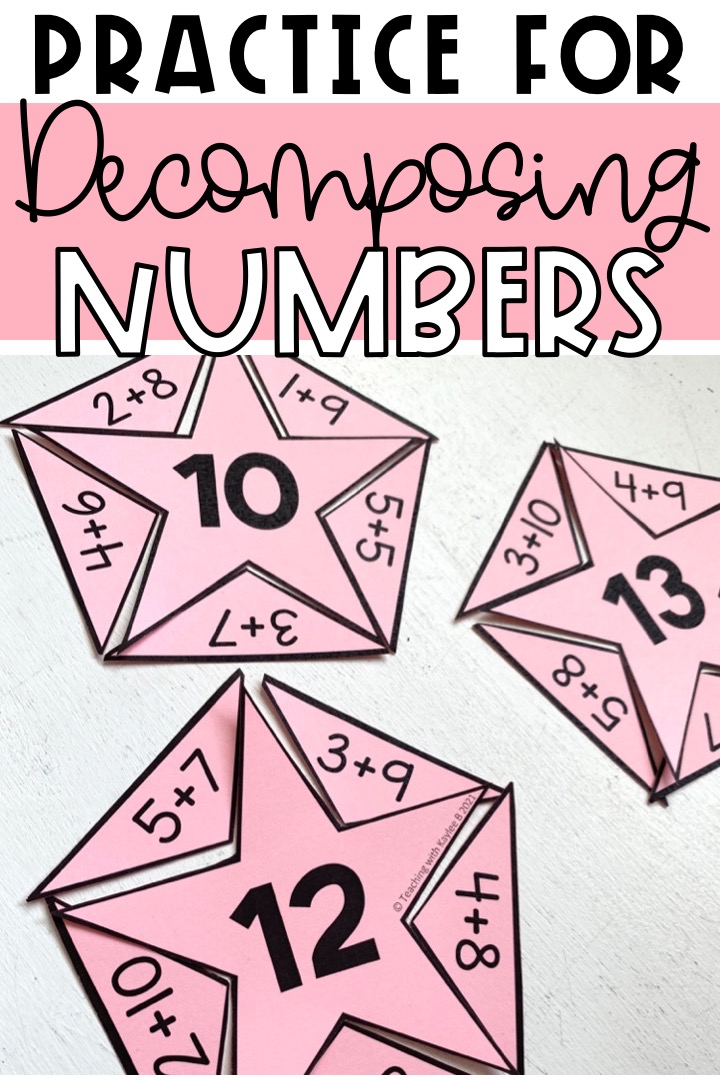
I also have my students practice with my I Spy Math Facts Worksheets. On these pages, I have hidden lots of different addition equations. Students have to find certain math facts. For example, math facts that equal 10. They highlight those equations. When they come to facts that don’t equal 10, they write it on the recording sheet and give the answer. So they get lots of math fact practice. Find these I Spy Math Fact Worksheets here.
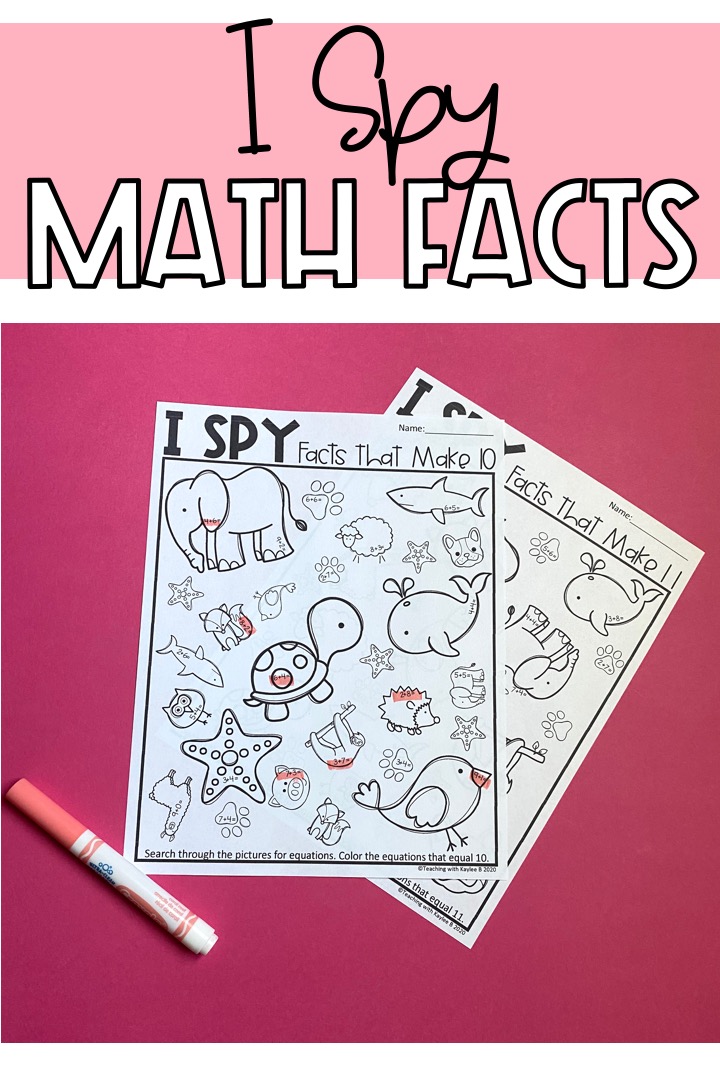
Decomposing and Composing Numbers
Now that students have had practice with decomposing numbers, they need practice on how to use those decomposed numbers to compose numbers to find answers to math facts. This goes really well with the make ten math fact strategy.
I give students an equation like 8+3. Well it’s easier to add numbers to 10. So let’s take some from the 3 to give to the 8 to get to 10. We need to break apart 3 into 2 and 1. 8+2=10. 10+1=11, so 8+3=11.
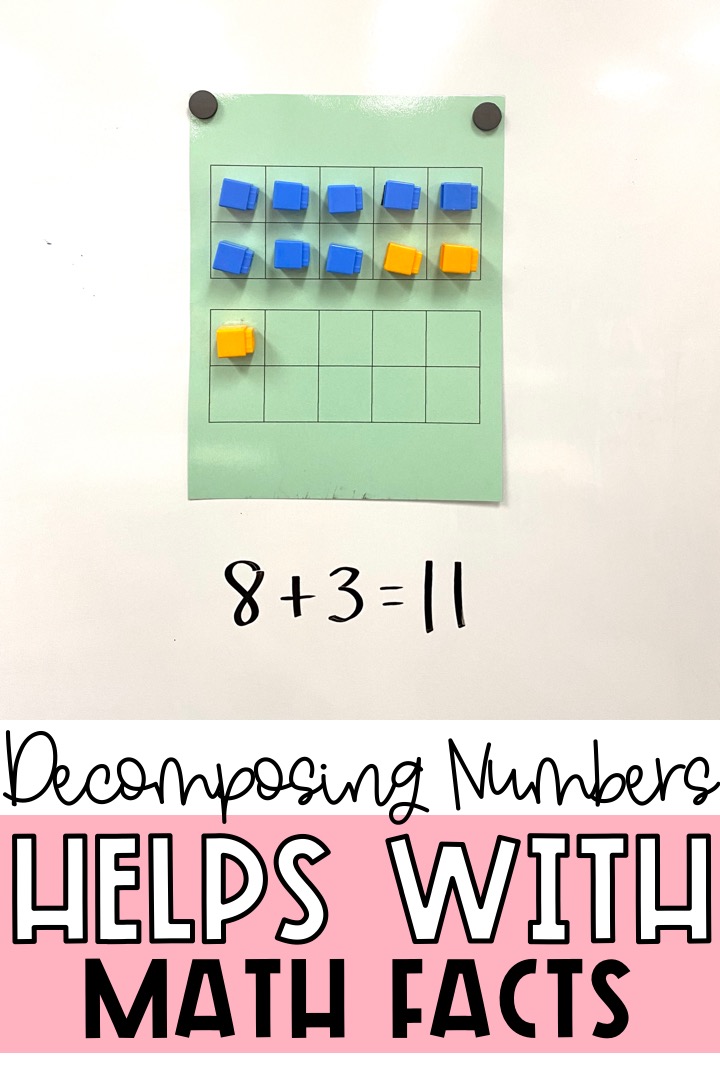
I use ten frames and linking cubes to show students how we can decompose that number to get to 10.
Then I give students lots of practice with this strategy. I have them do a scoot around the room activity with my Make Ten Strategy Task Cards. Learn more about teaching the Make 10 Strategy in this blog post here.
Decomposing numbers helps students be flexible with numbers. It helps them advance from counting strategies to reasoning strategies to find answers to math facts. It helps them get closer to math fact fluency. For more guidance and tips to help students get to math fact mastery, download my free workbook for 1st and 2nd grade teachers: The 7 Steps to Ensure Math Fact Fluency. Download if free here.
